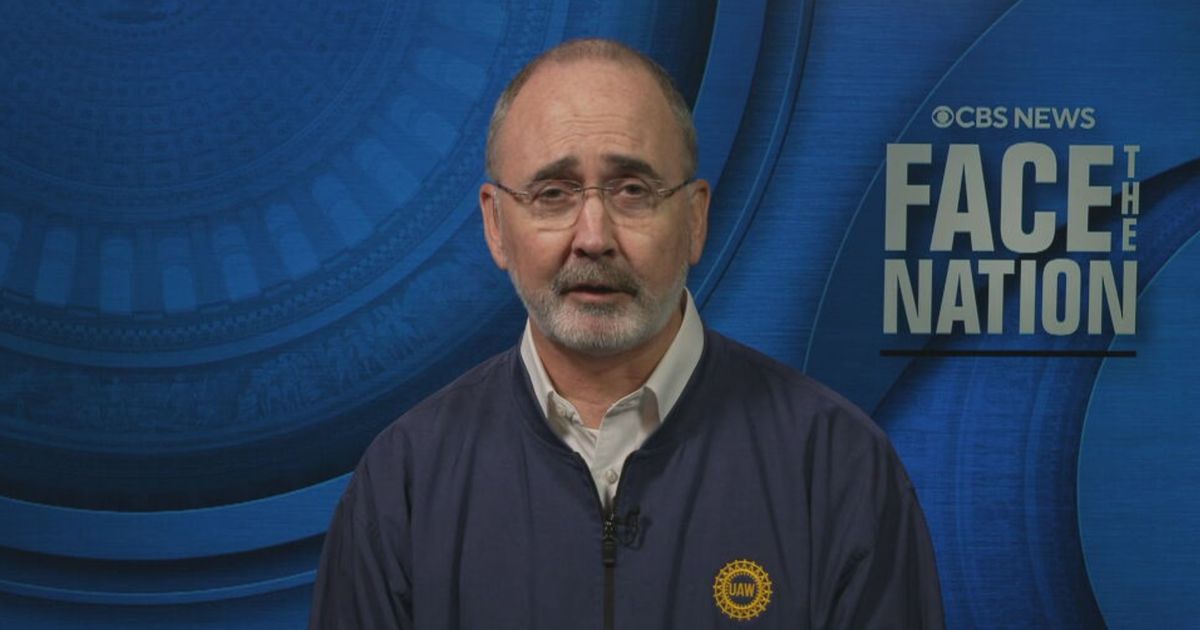Iran's currency is set to get a new name — and lose four zeros
Tehran - The head of Iran's Central Bank announced Monday that the nation's currency was set to be re-named and re-valued. Long called the rial, Iran's money will soon likely be called the Toman, and an impressive four zeros will be shaved off all denominations. What was previously 10,000 rials will become one Toman under the plans, which were approved Monday by the Iranian parliament.
"The bill to remove four zeros from the national currency was approved by lawmakers," reported Iran's semi-official students news agency ISNA. The plan still needs to be approved by powerful clerics, but according to the central bank chief, Iran will take two years to "pave the way for the change."
Whatever it's called, it probably won't be worth much. On April 5, you needed about 42,050 rials to buy a single U.S. dollar.
Iran has seen the value of its national currency decline steadily since the Islamic Revolution brought the religious government to power in 1979. That drop has accelerated in recent years as harsh US sanctions battered the country's economy.
The devaluation of the rial has been marked by four key turning points:
1. The Islamic Revolution of 1979. When the government of the Western-allied Shah collapsed and an ideological cadre of mullahs took over, many entrepreneurs and business moguls left the country for fear of persecution, and they took their wealth with them.
2. The end of the Iran-Iraq war in 1989. It took Iran almost eight years to rebuild its shattered economy, during which time the rial lost almost 100% of its value compared to the US dollar thanks to rampant inflation and the unchecked printing of cash.
3. The third and worst devaluation came during the last years of hard-line President Mahmoud Ahmadinejad's tenure. Before he left power in 2013, Iran was slammed with severe international sanctions that saw the rial hemorrhage almost 400% more of its value on global currency markets.
The Iranian economy was on the edge of collapse. Even Iranians lucky enough to still have income amid massive unemployment struggled to carry enough of the virtually worthless currency to shops to buy basic goods.
The economic crisis forced Iran's leaders to reconsider their stubborn refusal to negotiate limits to their nuclear program. In 2015, under intense pressure, Iran agreed to the now-defunct nuclear pact with the U.S., Europe, China and Russia.
4. The last major turning point, which is still playing out, came when President Donald Trump pulled the U.S. out of the nuclear deal. It was like an electric shock that sizzled through every aspect of Iran's already beleaguered economy. The rial's plunge has continued, leaving it almost 600% weaker against the US dollar than it was before the Revolution.
Iran has faced a litany of financial disasters since 1979, including international sanctions that have severely limited its ability to sell oil, which in turn have all but dried up its primary source of revenue.
The government has also implemented strict rules on access to foreign currency, leading to a flourishing black market for non-Iranian cash inside the country and further eroding the value of the national currency.
The global pandemic has piled even more stress onto the lives of people already bludgeoned by a White House bent on ramping up maximum pressure on Iran. Lopping four zeros off a 10,000 rial note and calling it a Toman won't do much to ease Iranian minds.



